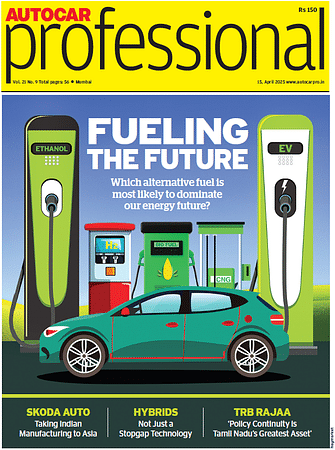SIAM Looking Ahead Conclave sees PV sales growing 1-4% in FY26
The growth estimate for the next financial year follows a similar performance expected this year.
India, the world’s third-largest car market, is looking at yet another year of sluggish growth in its passenger vehicle market as major carmakers are now forecasting another year of low single-digit volume growth for financial year 2025-2026, following a similar performance in this financial year. The persistent weakness in small car sales due to the affordability factor and the high base effect are reflected in the growth rates.
At the SIAM Looking Ahead Conclave held on Wednesday that brought together industry stakeholders to discuss factors influencing the market for the year ahead, major carmakers have projected the domestic volume to grow between 1-4% on year during 2025-26, according to industry sources. Maruti Suzuki and Hyundai expect the volumes to grow by 1-1.5% while Mahindra & Mahindra, Kia, and Tata Motors forecasted volume growth of 1-2%, 2-3% and 2-4%, respectively. While the overall volume growth remains low, strong demand for utility vehicles is the primary contributor to any increase in sales.
The passenger vehicle industry’s volume growth has been on a downward trend after the financial year 2023. The volume growth reduced to 8.4% with 42.19 lakh units sold in 2023-24 after a 27% growth in 2022-23. At last year’s Looking Ahead Conclave, the automakers had projected the growth during 2024-25 in the range of 2.5-4%, with sales of around 4.3 million units. While the growth rate has moderated, absolute sales volume is expected to hit a new high for the fourth year. Domestic sales during April-December of this year have grown 4.3% to 4.27 million units, as per the SIAM data.
The slowdown in the growth rate reflects de-growth in the entry-level, or small hatchbacks, which has been the segment that brings a lot of first-time buyers to the passenger vehicle market from the two-wheeler market. Substantial increases in the cost of these cars, disproportionate to the increase in income levels punched a hole in this segment over the years. Factors such as overall inflation and challenges in the IT industry further weakened the sentiments. The share of first-time buyers is estimated to have gone down over the year to around 40%, while the car penetration level in India is around 34 per 1,000 people.
“Customer purchasing power, cost of production, and understanding the needs of customers are some of the factors that have led to the growth of the Auto Industry. In India, we need the bottom of the pyramid to come up and the first time buyers to emerge,” said Partho Banerjee, head of sales and marketing at Maruti Suzuki.
Though the income tax exemption announced for individuals earning up to Rs 12 lakh annually and up to Rs 12.75 lakh for salaried taxpayers was expected to improve the sales of entry-level cars, the industry and experts seem to be less optimistic about it. In a recent report, brokerage Nomura had highlighted that the gains from change in personal income taxes may be limited, as the benefits are likely to accrue more to higher-income individuals, who may already own a car. Banerjee was also doubtful of the new tax rates fuelling the much needed growth.
However, the recent cut in the key benchmark rate by the RBI is likely to give some support to sales by reducing financing costs. A few other tailwinds for the industry include robust government spending on improving the infrastructure across the country as well as spending on the rural economy. The impact of the upcoming summer and monsoon seasons on sales will be significant, given the reduced dealership traffic caused by harsh weather and erratic rains in recent years.
Utility vehicles, which include SUVs and MPVs, have been the major growth drivers of the passenger vehicle industry in recent years. The share of utility vehicles in the domestic passenger vehicle industry has now increased to 65% from around 35% at the start of this decade, whereas the share of cars (hatchbacks and sedans) has declined to around 31% from 61%. Most carmakers are now focusing on improving their play in the SUV space with the significant number of launches seen.
According to Tapan Ghosh, Vice President of Sales at India’s second-largest carmaker Hyundai Motor, rising customer aspirations are driving strong SUV demand, which now accounts for 55% of the volume. He noted that around 45% of first-time Hyundai buyers are choosing SUVs, and expects hatchback customers to increasingly opt for premium variants.
“With rapid economic growth, the aspirations of customers are increasing. The SUVs are the flavour of the season. First-time buyers are also preferring SUVs. In India, mobility as a service has huge growth potential, as the youth is moving from ownership to user-ship model,” he noted.
Mahindra & Mahindra’s Vice President for Sales Pavan Kumar, who also noted that affordability is a major concern due to disposable incomes not keeping pace with prices, has projected an 8% growth in utility vehicle sales in the next financial year. Kumar said that the share of petrol vehicles in the industry has gone down to 65%, while CNG vehicles have increased to 20%. While the share of both, electric vehicles and hybrids remains almost the same at around 2.5%, he is of the opinion that all platforms will co-exist with the government's push for electric vehicles and ethanol.
New launches and premiumization have helped the SUV segment improve its share, catering to more aspiration buyers. However, this focus on bigger vehicles has resulted in less play in the entry-level or small car space. RC Bhargava, the Chairman of India’s largest carmaker Maruti Suzuki, has been highlighting that the degrowth in sales of small cars is a cause of worry for the passenger vehicle industry and the growth of this segment is necessary for the sustained growth of the industry.
“I do not agree with the perspective that the Indian customer has switched from small to big cars and their tastes are changing. It is not true. How can someone who can barely afford a two-wheeler suddenly become affluent enough to afford a Rs 12 lakh car? The people who buy SUVs are just an extremely small segment of the consumers, and therefore, despite the strong growth in SUVs, the overall growth of the auto industry has come down,” he told Autocar Professional in a recent interview.
Meanwhile, in the financial year 2026, major automakers will intensify their presence in the electric vehicle market. So far, Tata Motors and JSW MG Motor have dominated the mass-market EV segment. However, companies like Maruti Suzuki and Hyundai Motor are poised to start delivering their mass-market electric car models, while Tata Motors, Mahindra & Mahindra, and JSW MG Motor will roll out new models.
“With regards to EVs, a large part of the innovation has to come on the charging side and battery management systems in electric mobility. This could be a breakthrough year for EVs in India,” Tata.ev’s Vice President and Chief Commercial Officer Vivek Srivastava said.
The penetration of electric cars in India’s passenger vehicle market is currently at close to 2.5% and experts believe the penetration could improve to 4-5% this year with the barrage of new launches. Increased localization, declining battery prices, and production-linked incentives will enable automakers to reduce costs and establish a viable business model to meet future market demand.
RELATED ARTICLES
CEAT Q4 FY25: Revenue Surges 14.3% to ₹3,420.6 Crore, Profit Dips 3.5% YoY
For the full year ended March 31, 2025, CEAT Limited reported a consolidated revenue from operations of ₹13,217.9 crore,...
CIE Automotive India Revenue, Profit Decline in Q4
The company's profit after tax stood at ₹206.40 crores in Q4, compared to ₹230.48 crores in the same quarter last year, ...
Daewoo Eyes 20% Lubricant Exports From India
In a strategic partnership with India's petrochemical major Mangali Industries Ltd (MIL) the company will manufacture l...






 19 Feb 2025
19 Feb 2025
 6901 Views
6901 Views





 Arunima Pal
Arunima Pal



 Yukta Mudgal
Yukta Mudgal

